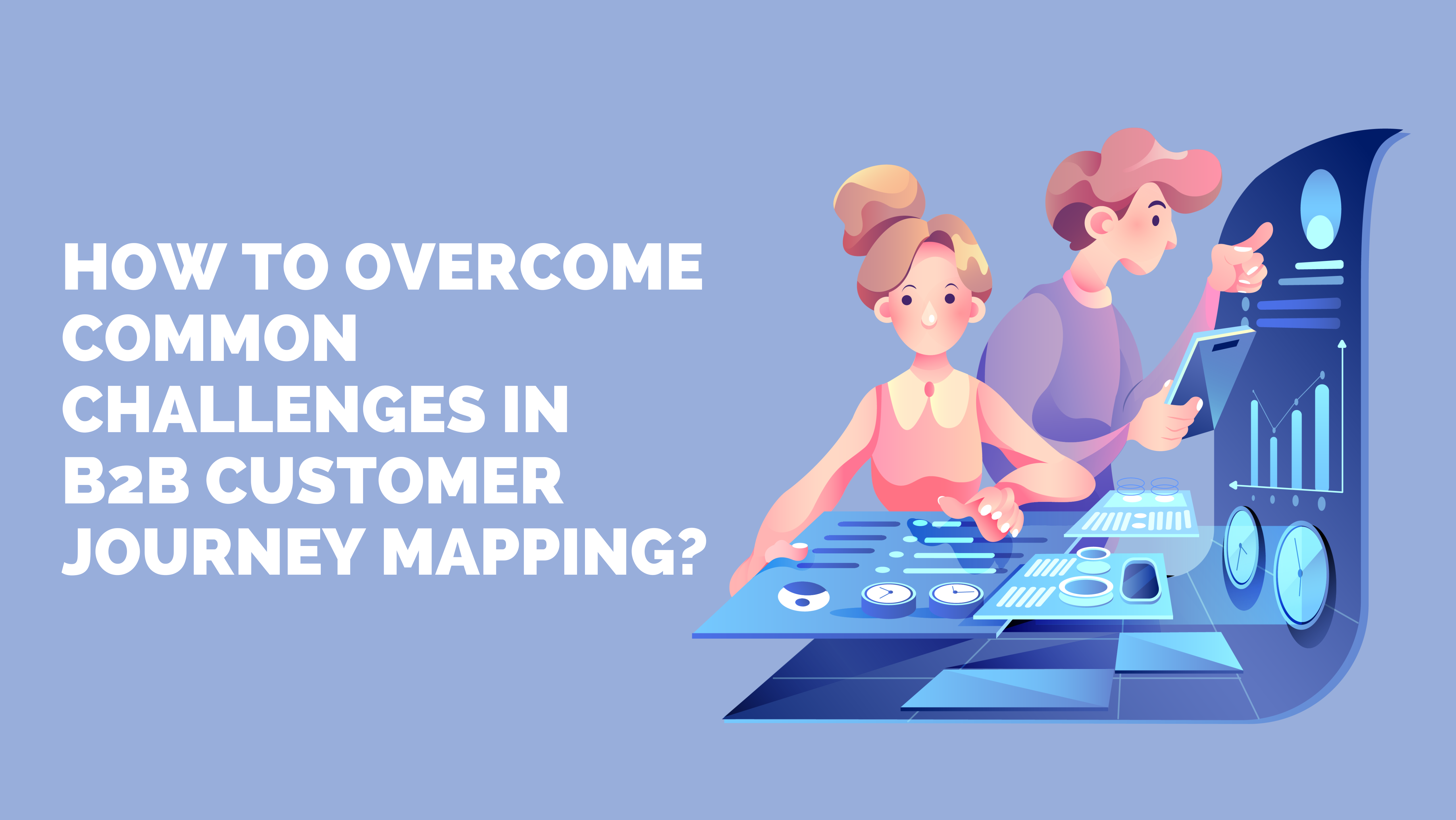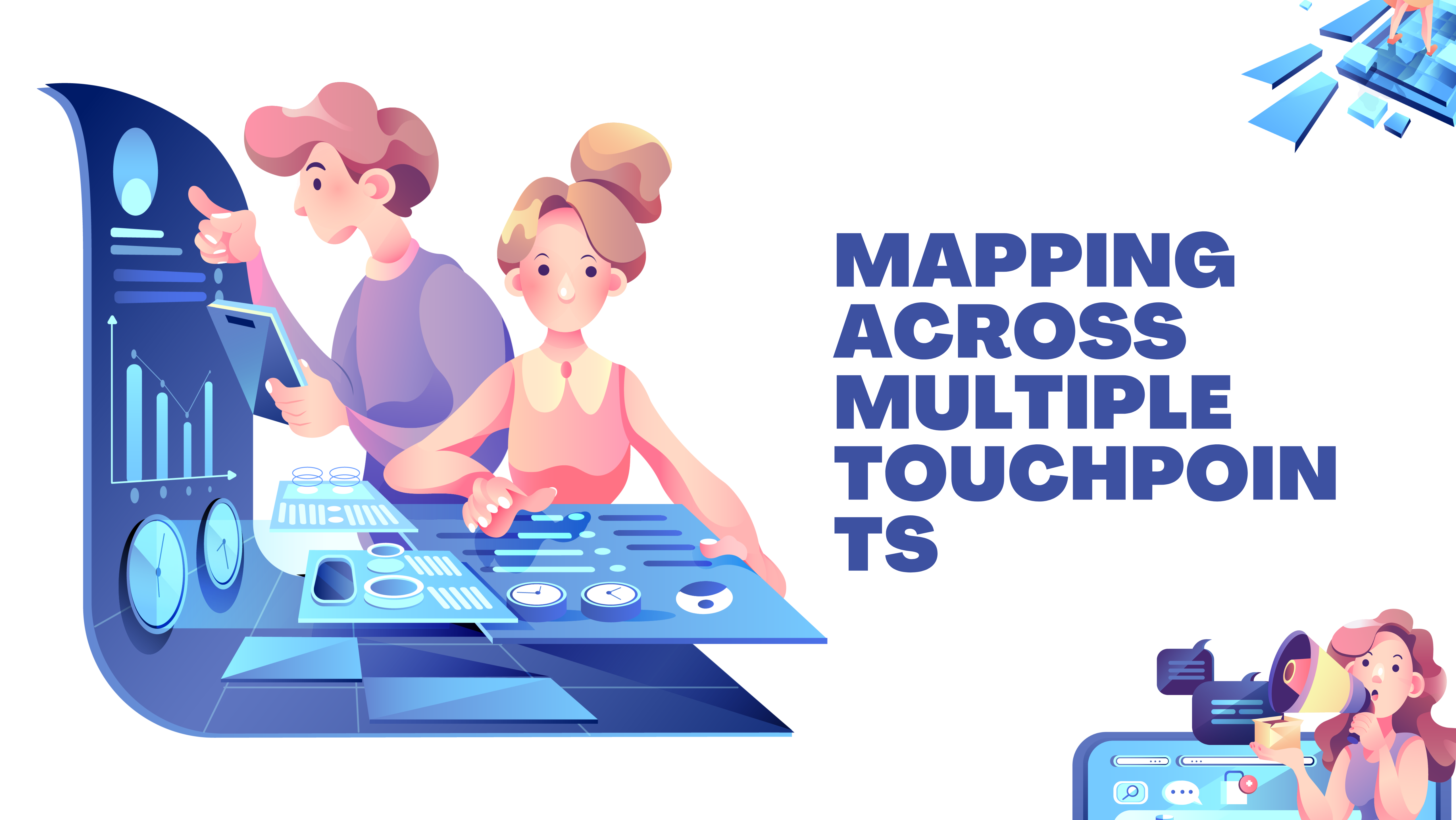
A potent tactic for comprehending and enhancing the customer experience in intricate commercial transactions is B2B customer journey mapping. We will examine the typical obstacles encountered in B2B customer journey mapping in this post and offer practical advice on how to get beyond them.
Table of Contents
Introduction
Comprehending the client journey is essential for success in the rapidly evolving realm of business-to-business interactions. But it has its own set of difficulties that frequently leave companies confused. Together, we will explore these issues and find workable solutions.
Understanding B2B Customer Journey Challenges
Understanding the difficulties associated with B2B customer journey mapping is essential for navigating its complex terrain. Handling the complexity of various decision-makers in B2B transactions is one such difficulty. B2B transactions, in contrast to B2C situations, may involve a number of stakeholders, each with different wants and preferences.
Inadequate Data and Insights
An important obstacle in B2B customer journey mapping is the lack of sufficient data available. Comprehensive insights are necessary for mapping the client journey, and partial or erroneous representations can result from a lack of data.
Businesses need to make investments in reliable data collection methods in order to handle this challenge. Customer relationship management (CRM) and advanced analytics solutions can offer a multitude of data required for efficient mapping.
Mapping Across Multiple Touchpoints
Maintaining uniformity across different touchpoints presents another difficulty. B2B exchanges frequently take place over a variety of channels, such as direct conversations, emails, and online forums. A comprehensive knowledge requires a smooth mapping of the client journey across different touchpoints.
Consistency can be improved by using technology to link touchpoints and adopting a single strategy. To provide a unified experience, this entails coordinating messaging, branding, and consumer interactions.

Aligning Internal Teams
Aligning internal teams working in various customer journey stages is a major problem. Teams in charge of customer care, sales, and marketing must work well together to guarantee a seamless transfer across touchpoints.
Teams can work together more effectively if they have same goals, cross-functional training, and regular lines of communication. The establishment of a cohesive client experience is contingent upon this alignment.
Personalization Challenges
Because client needs vary widely in the B2B space, personalising customer experiences can be difficult. Customising experiences for specific organisations necessitates a thorough comprehension of their particular needs.
Businesses can divide up their B2B clientele into groups according to demands, size, and industry to get around this problem. The customer journey can be made more personalised by putting personalised communication tactics and tailored content into practice.
Technological Hurdles
Technology is a necessary tool for B2B customer journey mapping, but it also has drawbacks. The smooth mapping of the client experience might be impeded by technological bottlenecks, outdated systems, and integration concerns.
Companies should spend money on cutting-edge equipment and software made especially for mapping B2B client journeys. Technology obstacles can be addressed and the mapping process streamlined with the help of automation, cloud-based solutions, and AI-powered analytics.
Addressing Customer Pain Points
A successful customer journey depends on recognising and resolving customer pain points. Difficulties like delays, poor communication, and unfulfilled expectations can ruin the experience as a whole.
Businesses can identify customer pain spots and take immediate action by proactively obtaining feedback from their customers. Difficulties can be transformed into opportunities for progress by putting good solutions into practice and offering proactive support.
Adapting to Evolving Customer Behaviors
Journey mapping becomes much more complex because of the changing nature of client behaviours in the business-to-business (B2B) sector. Companies need to continue being flexible and sensitive to the changing needs and tastes of their clients.
Businesses can adjust to shifting consumer behaviours by regularly updating customer personas, performing market research, and keeping up with industry developments. Maintaining the relevance of the mapped customer journey requires flexibility.
Utilizing Customer Feedback Effectively
B2B customer journey maps can be improved with the use of customer feedback. Nevertheless, a lot of companies find it difficult to integrate feedback into their workflows.
This gap can be closed by establishing transparent feedback loops and including important stakeholders in the analysis. Companies should use consumer feedback as a tool for ongoing development and make changes in response to timely findings.
Case Studies: Successful B2B Customer Journey Mapping
Analysing real-world triumphs offers priceless lessons on conquering obstacles. Case studies of companies that have successfully negotiated the challenges of B2B customer journey mapping might provide ideas and useful tactics.
XYZ Corporation is a perfect example of a success story, having mapped the customer experience across several touchpoints using a data-driven strategy. XYZ Corporation was able to obtain a thorough grasp of the tastes and behaviours of its customers by utilising sophisticated analytics techniques.

Innovative Tools for B2B Customer Journey Mapping
The tools available for mapping B2B client journeys are changing quickly. Companies can gain from implementing cutting-edge techniques that improve the mapping procedure.
Businesses can obtain meaningful information with the help of solutions like AI-driven mapping tools, predictive modelling software, and customer journey analytics platforms. Enhancing the efficiency of customer journey mapping can be achieved by incorporating these technologies into current systems.
Training Teams for Customer-Centricity
A change in culture is necessary to guarantee that internal teams give the customer journey top priority. This change can be sparked by training sessions that highlight the value of providing extraordinary experiences and customer-centricity.
Teams that are empowered and aware of how important their part is in the customer experience are more likely to make a good contribution. Frequent workshops and training sessions can help instill a customer-centric perspective in the culture of the company.
Measuring and Analyzing Success Metrics
A crucial step in evaluating the effectiveness of B2B customer journey mapping initiatives is the definition and analysis of key performance indicators (KPIs). Customer retention, conversion rates, and satisfaction scores are a few examples of metrics that might offer insightful data.
Continuous improvement of the customer journey mapping procedure is ensured by routinely analysing these indicators and implementing data-driven modifications. Companies should be flexible in how they respond to shifts in key performance indicators and modify their plans as necessary.
Also Reads: What Role Does Data Analysis Play in B2B Customer Journey Mapping?
Why Is B2B Customer Journey Mapping Essential for Growth?
How Can B2B Customer Journey Mapping Improve Customer Engagement?
How to Create a Successful B2B Customer Journey Mapping Strategy?
How Can B2B Customer Journey Mapping Enhance Marketing Strategies?
Conclusion
In conclusion, a systematic and comprehensive strategy is needed to overcome typical obstacles in B2B customer journey mapping. For businesses to build seamless and successful customer journeys, they need to address problems with data, technology, cooperation, and customer feedback.
Success requires constant adaptability to changing consumer behaviours, the use of cutting-edge technologies, and the development of a customer-centric culture. Businesses may improve the whole B2B customer experience and turn obstacles into opportunities by putting these methods into practice.
Frequently Asked Questions
Q: How often should businesses update their B2B customer journey maps?
A: Regular updates are essential, at least quarterly, to ensure maps remain relevant to evolving customer behaviors.
Q: What role does technology play in overcoming challenges in B2B customer journey mapping?
A: Technology is crucial, aiding in data analysis, seamless integration, and the use of innovative tools for mapping.
Q: How can businesses effectively gather and utilize customer feedback in the mapping process?
A: Establishing clear feedback loops, involving stakeholders, and viewing feedback as a continuous improvement tool are key.
Q: What is the significance of aligning internal teams in B2B customer journey mapping?
A: Alignment ensures a cohesive approach, preventing disjointed experiences and fostering a unified customer journey.
Q: Are there specific KPIs that businesses should focus on when measuring success in customer journey mapping?
A: Key performance indicators include customer satisfaction scores, conversion rates, and customer retention metrics.
